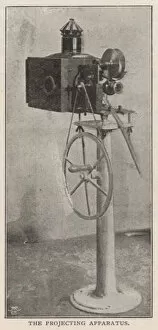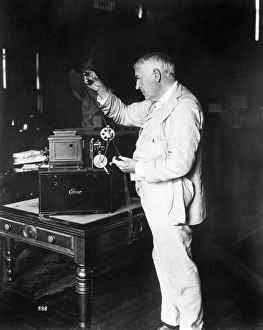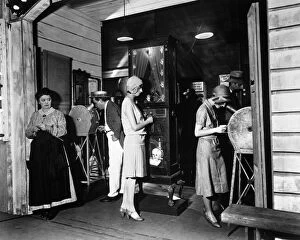Kinetoscope Collection
In 1894, Thomas Edison introduced the world to his groundbreaking invention, the Kinetoscope
All Professionally Made to Order for Quick Shipping
In 1894, Thomas Edison introduced the world to his groundbreaking invention, the Kinetoscope. This remarkable device aimed to reproduce human motion by presenting a rapid succession of pictures to the eye. With its swift and graded sequence of images, the Kinetoscope revolutionized entertainment as we knew it. One of the key figures behind this invention was R. W. Paul, who developed a projection apparatus for the Kinetoscope. His expertise in creating this innovative technology allowed for even larger audiences to experience the magic of moving pictures. An iconic moment captured by Edison's Kinetoscope was a sneeze recorded in black and white back in 1894. This simple act became an early testament to the power of film and its ability to capture everyday moments that would otherwise be lost in time. Mr. R. W. Paul himself can be seen alongside his camera, showcasing his instrumental role in bringing this revolutionary technology into existence. His dedication and ingenuity paved the way for future advancements in cinematography. The popularity of the Kinetoscope spread rapidly thanks to advertisements like an engraved leaflet promoting its wonders. People were captivated by this new form of entertainment that transported them into another world through moving images. San Francisco embraced this technological marvel with open arms, as evidenced by a parlor adorned with multiple Kinetoscopes from 1894-1895. The city became home to one of many arcades dedicated solely to these mesmerizing devices. Thomas Alva Edison took his innovation even further with his kinetographic theatre around 1892—a space where people could gather together and immerse themselves in cinematic experiences like never before. A snapshot from San Francisco showcases an entire arcade filled with eager patrons enjoying their time at various Kinetoscopes—an image that perfectly encapsulates society's fascination with this groundbreaking invention during those times. Even outside commercial spaces, individuals had access to their own Home Projecting Kinetoscopes—bringing the magic of motion pictures directly into their living rooms.














